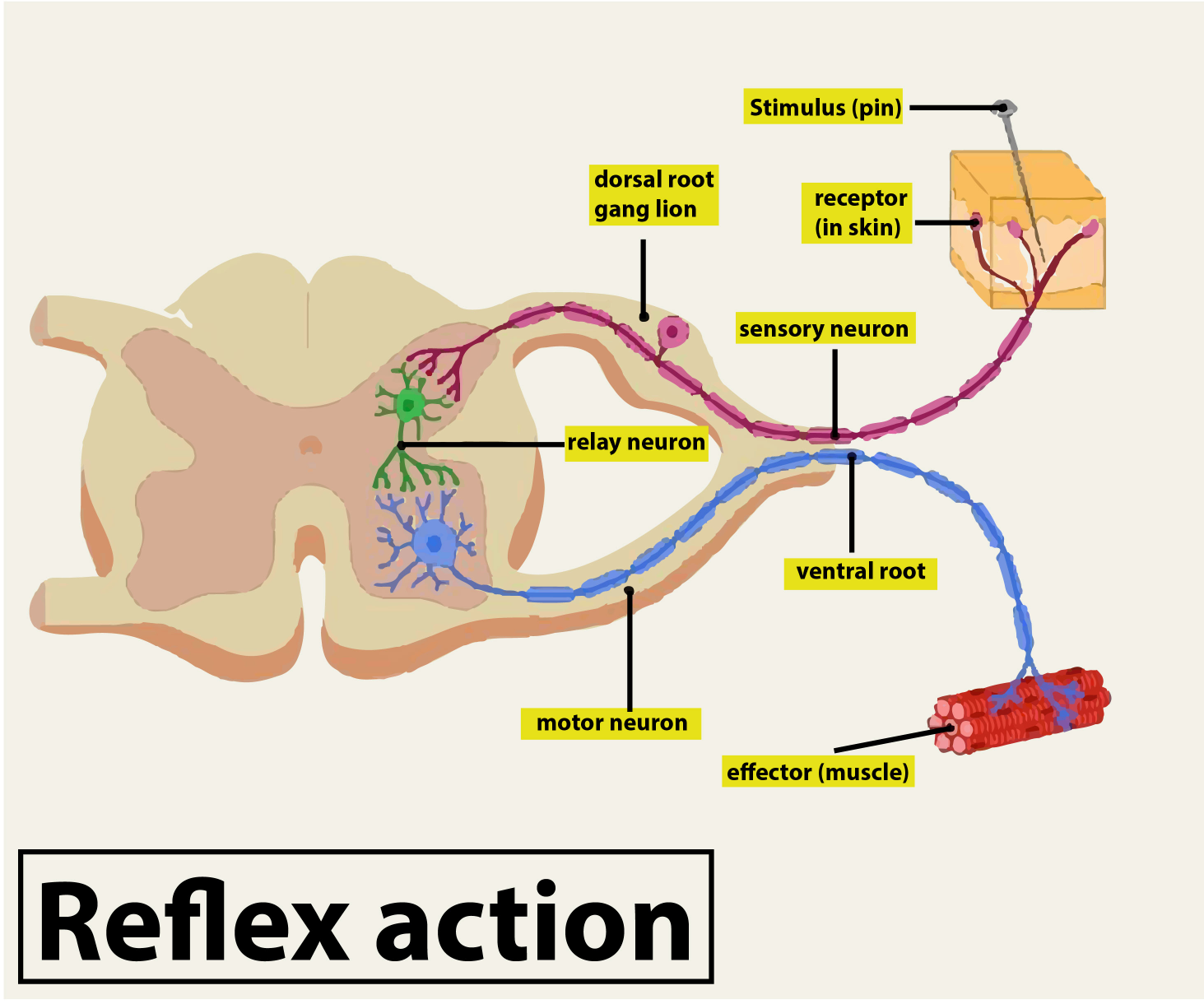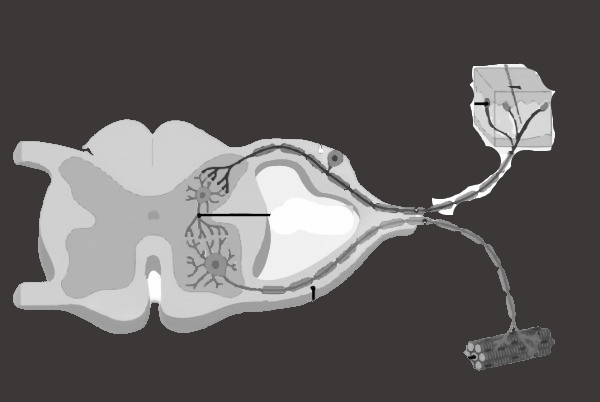
Answer
452.1k+ views
Hint: Whenever an organism comes in contact with something unusual, it’s body suddenly shows some reaction against that stimulus to protect the organism from any danger or sudden change in the surrounding conditions.
Complete step by step answer:
The phenomenon which is depicted in the diagram is a reflex action.
Definition: Reflex action is a sudden and instant movement in response to the stimulus. A true reflex is achieved by the reflex arc. It is involuntary i.e we do not have any control over them.
The reflex action mechanism starts when the receptor detects any sudden change or stimulus. The stimulus is noticed by the sensory organ. The sensory nerve of the sensory organ sends signals to the relay neuron. Further, the relay neuron will send a signal to the motor neuron. Now the motor neuron will send a signal to the last i.e effector and this causes sudden movement of the body part or cell.

There are two types of reflex arcs. First is the autonomic reflex arc, which is affecting inner organs, and Second is the somatic reflex arc, which is affecting muscles.
Examples: When we suddenly move out in the sun, our eye pupil contracts as that time light acts as a stimulus.
Similarly, when we get unknowingly pricked with a needle, we move our body part against the needle.
So, the correct answer is ‘reflex action’.
Note: It is very important to note that signals do not travel up to the brain. This is the reason why it is a very quick and sudden response to the stimulus. Signals are only carried up to sensory neurons that are present in the spinal column.
Complete step by step answer:
The phenomenon which is depicted in the diagram is a reflex action.
Definition: Reflex action is a sudden and instant movement in response to the stimulus. A true reflex is achieved by the reflex arc. It is involuntary i.e we do not have any control over them.
The reflex action mechanism starts when the receptor detects any sudden change or stimulus. The stimulus is noticed by the sensory organ. The sensory nerve of the sensory organ sends signals to the relay neuron. Further, the relay neuron will send a signal to the motor neuron. Now the motor neuron will send a signal to the last i.e effector and this causes sudden movement of the body part or cell.

There are two types of reflex arcs. First is the autonomic reflex arc, which is affecting inner organs, and Second is the somatic reflex arc, which is affecting muscles.
Examples: When we suddenly move out in the sun, our eye pupil contracts as that time light acts as a stimulus.
Similarly, when we get unknowingly pricked with a needle, we move our body part against the needle.
So, the correct answer is ‘reflex action’.
Note: It is very important to note that signals do not travel up to the brain. This is the reason why it is a very quick and sudden response to the stimulus. Signals are only carried up to sensory neurons that are present in the spinal column.
Recently Updated Pages
Who among the following was the religious guru of class 7 social science CBSE

what is the correct chronological order of the following class 10 social science CBSE

Which of the following was not the actual cause for class 10 social science CBSE

Which of the following statements is not correct A class 10 social science CBSE

Which of the following leaders was not present in the class 10 social science CBSE

Garampani Sanctuary is located at A Diphu Assam B Gangtok class 10 social science CBSE

Trending doubts
A rainbow has circular shape because A The earth is class 11 physics CBSE

Fill the blanks with the suitable prepositions 1 The class 9 english CBSE

Which are the Top 10 Largest Countries of the World?

How do you graph the function fx 4x class 9 maths CBSE

The Equation xxx + 2 is Satisfied when x is Equal to Class 10 Maths

What is BLO What is the full form of BLO class 8 social science CBSE

Change the following sentences into negative and interrogative class 10 english CBSE

Give 10 examples for herbs , shrubs , climbers , creepers

Difference between Prokaryotic cell and Eukaryotic class 11 biology CBSE





